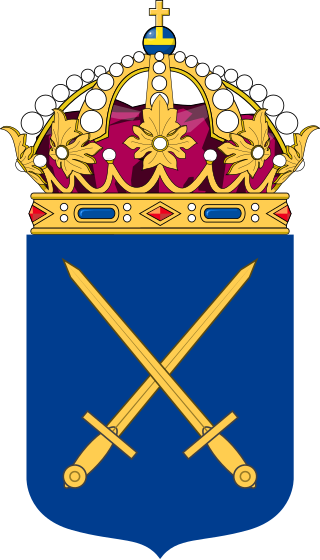
Västernorrland County is a county (län) in the north of Sweden. It is bordered by the counties of Gävleborg, Jämtland, Västerbotten and the Gulf of Bothnia.

The 25 provinces of Sweden are historical, geographical and cultural regions. They have no administrative function, but retain their own cultural identities, dialects and folklore.

Norrland is the northernmost, largest and least populated of the three traditional lands of Sweden, consisting of nine provinces. Although Norrland does not serve any administrative purposes, it continues to exist as a historical, cultural, and geographic region; it is often referred to in everyday language, e.g., in weather forecasts. Several related Norrland dialects form a distinct subset of dialects of the Swedish language separate from those to its south.

Ångermanland is a historical province (landskap) in the northern part of Sweden. It is bordered by Swedish Lapland, Västerbotten, the Gulf of Bothnia, Medelpad and Jämtland.

Medelpad is a historical province or landskap in the north of Sweden. It borders Hälsingland, Härjedalen, Jämtland, Ångermanland and the Gulf of Bothnia.

The Swedish Army is the land force of the Swedish Armed Forces. The army's history dates back to the Swedish War of Liberation in 1521.

The Hälsinge Regiment, designations I 14, I 14/Fo 49 and I 14/Fo 21, was a Swedish Army infantry regiment that traced its origins back to the 16th century. It was disbanded in 1997. The regiment's soldiers were originally recruited from the provinces of Hälsingland and Gästrikland, and it was later garrisoned in Gästrikland.

The Västerbotten Regiment, designations I 19, I XIX, I 20 and I 20/Fo 61, was a Swedish Army infantry regiment that traced its origins back to the 16th century. The regiment's soldiers were originally recruited from the province of Västerbotten, where it was later garrisoned. The unit was disbanded as a result of the disarmament policies set forward in the Defence Act of 2000.
Södermanlands storregemente or Landsregementet i Södermanland was one of the nine grand regiments organized by Gustavus Adolphus in 1614 with foot soldiers from Värmland and Närke. This unit was divided as early as 1627, one of which later became the Södermanland Regiment.
Östergötlands storregemente or Landsregementet i Östergötland was one of the nine grand regiments organized by Gustavus Adolphus in the late 1610s and split into smaller regiments in the 1620s.
Västergötlands storregemente or Landsregementet i Västergötland was one of the nine grand regiments organized by Gustavus Adolphus in the late 1610s and split into smaller regiments in the 1620s.
Smålands storregemente or Landsregementet i Småland was one of the nine grand regiments organized by Gustavus Adolphus in the late 1610s and split into smaller regiments in the 1620s.

The Jämtland Ranger Corps, is a Swedish Army infantry unit that operated in various forms during the years 1670–1983, 1990–1997, 2000–2005 and 2021–present. The unit was and is located in Östersund Garrison in Östersund.
Lower Norrland Military District, originally II Military District was a Swedish military district, a command of the Swedish Armed Forces that had operational control over Lower Norrland, for most time of its existence corresponding to the area covered by the counties of Västernorrland, Jämtland and the northern part of Gävleborg. The headquarters of Milo NN were located in Östersund.

The Norrland Dragoon Regiment, also K 4, is a Swedish Army unit specialized in arctic warfare and special operations. Located in the province of Lappland, it was historically a cavalry unit that traces its origins back to the 17th century.
The Swedish football district associations are the local governing bodies of association football in Sweden. District FAs exist to govern all aspects of local football in their defined areas, providing grassroots support to the Swedish Football Association by promoting and administering football, futsal and beach soccer in their respective districts.
Norrland dialects is one of the six major dialect groupings of the Swedish language. It comprises most dialects traditionally spoken in Norrland, except for those of Gästrikland and southern Hälsingland, which are usually classified as Svealand Swedish, as well as those of Härjedalen and northernmost Jämtland, which are usually classified as Norwegian.

The Västernorrland Regiment, designation I 21, is a Swedish Army infantry unit which operated in various forms the years 1869–1983, 1991–2000 and from 2022. It is located in Sollefteå Garrison in Sollefteå with a detachment in Östersund.
General elections were held in Sweden on 19 September 1976. Results were published by the Statistical Central Bureau.










